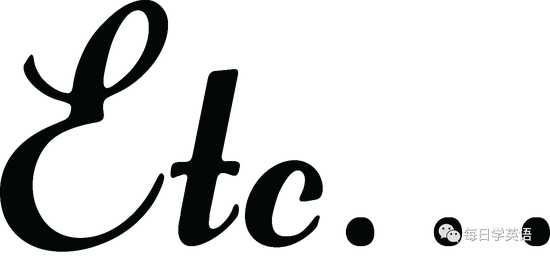I.e。和e.g。是书面英语中常见的拉丁文缩写,你知道它们的全拼和含义吗?事实上,即使在以英语为母语的国家,i.e。和e.g。也是人们最经常弄混的一对缩写。
I.e。和e.g。傻傻分不清楚?没关系,下面《纽约时报》畅销书作家、“语法女王”蜜妮安•福格蒂(Mignon Fogarty)就和同学们好好聊聊二者的区别。
I.e。和e.g。啥意思?
I.e。 and e.g。 are both abbreviations for Latin terms。 I.e。 stands for id est and means roughly “that is。” E.g。 stands for exempli gratia, which means “for example。” “Great。 Latin,” you‘re probably thinking。 “How am I supposed to remember that?”
I.e。和e.g。都是拉丁语缩写,i.e。代表id est,意为“也就是说,即”(that is),e.g。代表exempli gratia,意思是“举个例子”(for example)。你可能在想,“很好,拉丁语,可我怎么记得住啊?”
如何记住两者的区别
Forget about i.e。 standing for “that is” or whatever it really means in Latin。 From now on, i.e。, which starts with i, means “in other words,” and e.g。, which starts with e, means “for example。” I = in other words。 E= example。
不要去管i.e。的意思或者它的拉丁文全拼。从现在开始,i打头的i.e。代表in other words(也就是说),而e打头的e.g。代表for example(举例说明)。字母I= in other words,字母E= example。
注意事项
Don‘t italicize i.e。 and e.g。; even though they are abbreviations for Latin words, they’ve been used for so long that they‘re considered a standard part of the English language。
I.e。和e.g。不用斜体。虽然二者都是拉丁文缩写,但这种用法由来已久,已被视为英语中的一种标准用法。
Also, remember that they are abbreviations, so there is always a period after each letter。
另外,记住i.e。和e.g。都是缩写,所以每个字母后面都有句号。
A comma is usually used after i.e。 and e.g.I.e。和e.g。后面通常要加逗号。
福格蒂认为,使用i.e。和e.g。时应该在后面加逗号。她查阅了六本书写规范指南,其中有五个都推荐这种用法。
除了i.e。和e.g。,书面英语中还有不少的拉丁文缩写,我们整理了一些常见缩写的含义及用法,供大家学习。
1
缩写:etc。
拉丁文:et cetera /ɪtˈset。ɚ。ə/
释义:等等

例句:
She knew all about my schoolwork, my hospital work, etc。
她知道我的学业、医院工作等所有情况。
2
缩写:ca。
拉丁文:circa /ˈsɝː。kə/
释义:(用于日期中表示大概的数)大约
例句:
The antique clock is from ca.1900。
这个古董钟表产自1900年左右。
3
缩写:cf。
拉丁文:confer /kənˈfɝː/
释义:(提示读者比较所引用资料中的说法与文中的论述)参阅
例句:
For the more salient remarks on the matter, cf。 “Isis Unveiled,” Vol。 I。
关于此事更显著的评议可参阅《揭开面纱的伊西斯》第一卷。
4
缩写:id。
拉丁文:idem /ˈiˌdem/
释义:同上,用来避免(在引用、脚注、书目等处)重复某个男性作者的名字。如果是女性作者,用ead。(eadem)。
5
缩写:ff。
拉丁文:folio /ˈfoʊ。li.oʊ/
释义:该页或该行和接下来的数页或数行
例句:
……see page 258ff。
来源:每日学英语微信公众账号
责任编辑:陈熙

